The Smith Machine is a versatile piece of gym equipment that can help you perform a wide range of exercises. This machine, commonly found in many gyms, features a barbell fixed to vertical guides, allowing for controlled movements and added safety. If you’re a beginner looking to perfect your form or working out solo sans spotter, the Smith Machine can give you peace of mind when performing big, heavier Olympic-style lifts. Whether you're looking to build muscle, improve your strength, or simply add variety to your workout routine, the Smith Machine can be a valuable addition to your fitness regimen. In this blog, we'll explore the many benefits of the Smith Machine and provide tips on how to use it safely and effectively. So, let's dive in and discover all this powerful piece of equipment offers.
Pros & Cons of Using a Smith Machine
The Smith Machine is a great piece of equipment that can help you build muscular strength, as well as your confidence with more complex, barbell-style weight training. However, like with any type of gym equipment or exercise training, there are both positives and negatives to this method of training. Read on to find out if this is the right machine for you and your training! Here are some pros and cons of incorporating a Smith Machine into your training routine:
Pros:
1. It’s Great for Beginners
If you’re looking to get into some bigger, Olympic-style lifting you should consider trying out the Smith Machine! One of the primary concerns for beginners is maintaining proper form and stability during weightlifting exercises. The Smith Machine's guided barbell allows for a fixed range of motion, reducing the risk of uncontrolled movements and promoting better stability. This stability helps you focus on mastering your technique without the added pressure of balancing a free-weight barbell.
2. Perfect Your Lifting Form
The guided barbell in the Smith Machine moves along a vertical track, providing a fixed range of motion for users. This restriction helps beginners maintain proper alignment and movement patterns throughout each lift. It prevents excessive deviations or compensations that may occur with free weights, allowing you to focus on executing movements correctly.
3. It’s Safer if You Are Working Out Alone
The Smith Machine comes equipped with safety catches or hooks at various heights along the vertical track. These catches can be adjusted to act as a safety mechanism, preventing the barbell from falling or dropping too low in case you reach your limit or lose control. This feature provides a sense of security and minimizes the risk of injury, particularly if you are new to weightlifting. Additionally, the Smith Machine's guided movement enables precise targeting of specific muscle groups. By adjusting the position of the barbell bar and your body placement, you can isolate and activate particular muscles effectively. This ability to emphasize specific areas helps beginners understand how different muscle groups should be engaged during various exercises, leading to improved form and muscle activation.
Cons:
1. It Does Not Require as Much Muscular Activation in Stabilizer Muscles
It's important to note that while the Smith Machine offers certain advantages in terms of stability and ease of use, it also has limitations. Its fixed path of motion may not fully mimic natural movement patterns and can restrict functional training. In a 2010 study, researchers found less muscle activation in subjects who performed a Smith Machine bench press when compared to subjects who performed a regular barbell bench press. (1) Therefore, it's recommended to incorporate a combination of free-weight barbell exercises, functional movements, and machine-based exercises to achieve a well-rounded and comprehensive strength training routine.
2. It’s “Easier” Than Using a Traditional Barbell
Since the Smith Machine provides stability and support, the core muscles are not as actively engaged compared to exercises performed with free weights. The core muscles play a crucial role in stabilizing the body during compound movements. Over-reliance on the Smith Machine can potentially lead to weaker core muscles and less functional strength.
3. Your Exercises Are Limited to the Parameters of the Machine
The guided barbell movement of the Smith Machine restricts the natural range of motion compared to using free weights. This limitation can lead to a less comprehensive and functional training experience. It may not engage the stabilizer muscles and joints to the same extent as free weight exercises, potentially limiting overall strength and stability gains. The Smith Machine's fixed vertical track forces the barbell into a specific path of movement. This fixed pattern does not accommodate individual variations in biomechanics and can limit the ability to customize exercises based on personal needs and preferences. It may not allow for the natural movement patterns that occur in real-life activities or sports.
It's important to note that the downsides mentioned above do not make the Smith Machine inherently bad or ineffective. However, they highlight the importance of incorporating a variety of training modalities, including free weights, functional movements, and other resistance training equipment, to ensure a well-rounded and comprehensive fitness routine. Balance and diversity in training methods can help maximize strength gains, muscle development, and functional abilities.
5 Exercises You Can Do Using the Smith Machine
There are a variety of exercises that can be done using the Smith Machine. Here are a few of our favorites!
1. Back Squat
Position yourself in the Smith Machine with your feet shoulder-width apart and adjust the barbell height to align with your upper back and shoulders. Step under the barbell, place it across your upper back, and unrack it. Stand with a slightly wider than shoulder-width stance, toes slightly turned outward. Brace your core, then squat by sitting your hips back like you are sitting back into a chair. Descend as low as feels comfortable, aiming to get your thighs at least parallel to the floor. Drive through your heels to rise back up to the starting position.
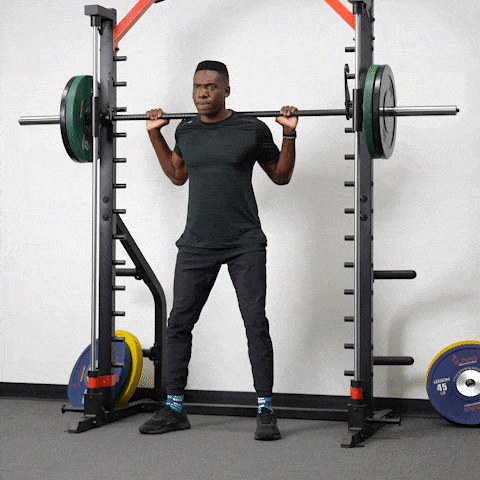
2. Rack Pull (Modified Deadlift)
A rack pulls on the Smith Machine is a partial deadlift variation that targets the muscles of the posterior chain, primarily the hamstrings, glutes, and lower back. To perform a rack pull on the Smith Machine, set the barbell to an appropriate height, typically around knee level or slightly higher. Stand facing the barbell with your feet shoulder-width apart. Position your body with a slight forward lean, maintaining a neutral spine and braced core. Grip the barbell with an overhand or mixed grip, hands slightly wider than shoulder-width apart. Engage hamstrings and glutes, drive through your heels, and stand up tall, pulling the barbell towards your hips. Keep your shoulders back and maintain a straight back throughout the movement. Once you reach the top position, slowly lower the barbell back down to the starting position, maintaining control. Rack pulls on the Smith Machine allow you to focus on strengthening the upper portion of the deadlift movement and can be a valuable addition to your lower body and posterior chain training routine.
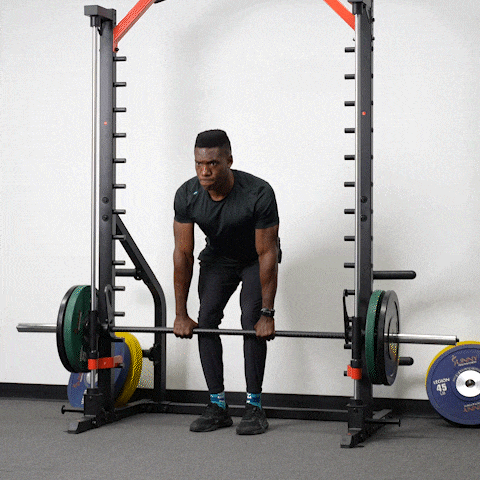
3. Split Squat
The split squat on the Smith Machine is a variation of the traditional split squat exercise that utilizes the guided barbell movement of the machine to enhance stability and control. To perform the split squat on the Smith Machine, set the barbell on the machine's vertical track at shoulder height when in a split squat stance. Stand facing away from the machine with one foot in front of you and the other foot positioned behind you, maintaining a comfortable and stable stance. Position your front foot far enough forward so that when you lower down into the squat, your front knee remains directly above your ankle. Engage your core, maintain an upright torso, and descend by bending both knees simultaneously. Lower your body until your back knee is just above the ground or lightly taps the ground. Ensure that your front knee stays in line with your toes and does not collapse inward. Push through your front heel and drive upwards to return to the starting position. Complete the desired number of repetitions and then switch legs. The split squat on the Smith Machine primarily targets the quadriceps, hamstrings, glutes, and calves while also engaging the core for stability. It can be an effective exercise for building lower body strength, improving balance, and enhancing overall lower body muscle development.

4. Bench Press
The bench press on the Smith Machine is a variation of the classic barbell bench press that utilizes the guided movement of the Smith Machine for added stability and control. To perform the bench press on the Smith Machine, set the barbell on the horizontal track of the machine at arm’s length from the bench. Lie down on the bench with your feet firmly planted on the ground, ensuring your body is centered and aligned with the barbell. Grasp the barbell with a slightly wider than shoulder-width grip, keeping your hands in line with your shoulders. Engage your core, squeeze your shoulder blades together, and unrack the barbell by extending your arms. Lower the barbell towards your chest, allowing your elbows to bend and maintaining control throughout the descent. Aim to bring the barbell to your chest, just above the sternum, without bouncing it off. Pause briefly, then drive the barbell back up to the starting position by extending your arms and pushing through your chest and shoulders. The bench press on the Smith Machine primarily targets the chest muscles (pectoralis major), along with the triceps and shoulders. It can be an effective exercise for building upper body strength, developing chest muscles, and improving overall pressing power.
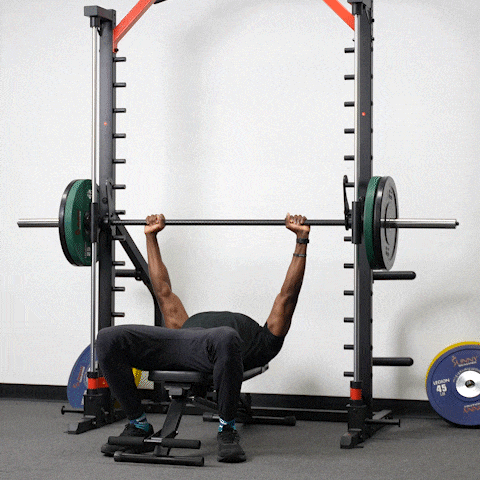
5. Seated Overhead Press
The seated overhead press on the Smith Machine is an exercise that targets the shoulders, upper back, and triceps while providing stability and control through the guided movement of the machine. To perform the seated overhead press on the Smith Machine, adjust the seat height so that the barbell is at shoulder level when you are seated. Sit upright with your feet flat on the floor and your back firmly against the backrest. Grasp the barbell with a slightly wider than shoulder-width grip, palms facing forward. Engage your core, keep your chest lifted, and press the barbell upward by extending your arms while maintaining control throughout the movement. As you press the barbell overhead, ensure that your elbows stay slightly in front of your shoulders and that your wrists are aligned with your forearms. Fully extend your arms without locking your elbows at the top. Pause briefly, then lower the barbell back down to shoulder level under control. Repeat for the desired number of repetitions, maintaining proper form and a controlled pace. The seated overhead press on the Smith Machine helps develop shoulder strength, stability, and muscular endurance, making it a valuable exercise for building upper body strength and enhancing overall shoulder development.
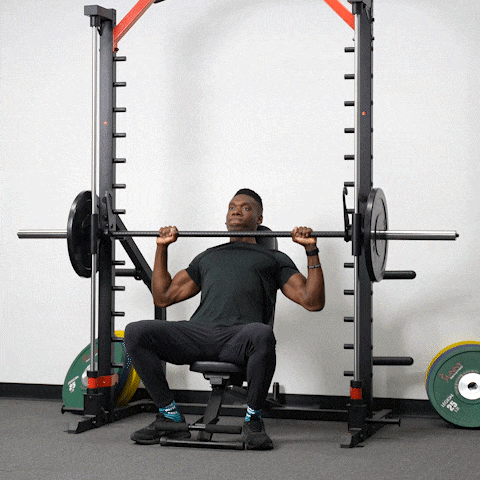
Safety First!
When using the Smith machine, it's crucial to prioritize safety to minimize the risk of injuries. One of the key safety tips is to begin your workout with a proper warm-up routine. This should include dynamic stretches and mobility exercises to prepare your muscles and joints for the exercises you'll be performing on the Smith Machine.
Utilizing spotter arms is another important safety measure. Adjust the spotter arms to a suitable height that allows you to perform exercises comfortably. They act as a safety mechanism in case you're unable to complete a rep. Set the spotter arms just below the level where the bar would rest if you were to drop it, ensuring they can catch the bar safely.
If you're new to the Smith Machine or a particular exercise, it's advisable to start with lighter weights. This allows you to familiarize yourself with the movement pattern and maintain proper form. Gradually increase the weight as you gain confidence and strength, but always prioritize form over the amount of weight you lift.
Always listen to your body and pay attention to any discomfort or pain during your workout. If something feels off, it's important to stop the exercise and assess the situation. Pushing through pain can worsen injuries. If necessary, consult a healthcare professional for guidance.
Sunny’s Smith Machine
You don’t have to go to the gym anymore just to access one of these machines! Sunny’s newest Smith Machine Squat Rack Essentials II brings all the benefits of the Smith Machine right to the comfort of your home.
Work on Olympic-style lifts safely and conveniently at home and aim to push beyond your limits with the Premium Smith Machine Squat Rack - SF-XF920021. This Smith Machine is designed with cylindrical glide rails, a 2-inch bar, and safety spotter arms. Perfect for beginners looking to improve their weightlifting technique and build confidence. Bring home this high-end full body workout experience featuring a multi-grip, height adjustable pull-up bar, weighted plate storage, and resistance band anchors. Switch up your workout by placing a bench in the rack for shoulder or bench press exercises. This Smith Machine allows you to safely tackle a variety of workouts and is designed for all fitness levels.
Wrap Up
The Smith Machine offers versatility, safety, and targeted muscle engagement, making it a valuable tool for individuals at any fitness level. Its ability to perform a wide range of exercises, coupled with built-in safety features like spotter arms, makes it suitable for beginners and those who want to work on their lifting form. The adjustable weight increments allow for gradual progression, while the fixed bar path enables precise targeting of specific muscle groups. Incorporating the Smith Machine into your fitness routine can help you achieve various goals, whether it's building strength, improving muscle tone, or enhancing overall fitness. Embrace the benefits of the Smith Machine and elevate your workout routine.
1. Schick, E. E., Coburn, J. W., Brown, L. E., Judelson, D. A., Khamoui, A. V., Tran, T. T., & Uribe, B. P. (2010). A comparison of muscle activation between a Smith Machine and free weight bench press. Journal of Strength and Conditioning Research, 24(3), 779–784. https://doi.org/10.1519/jsc.0b013e3181cc2237. Accessed 12 May 2023.

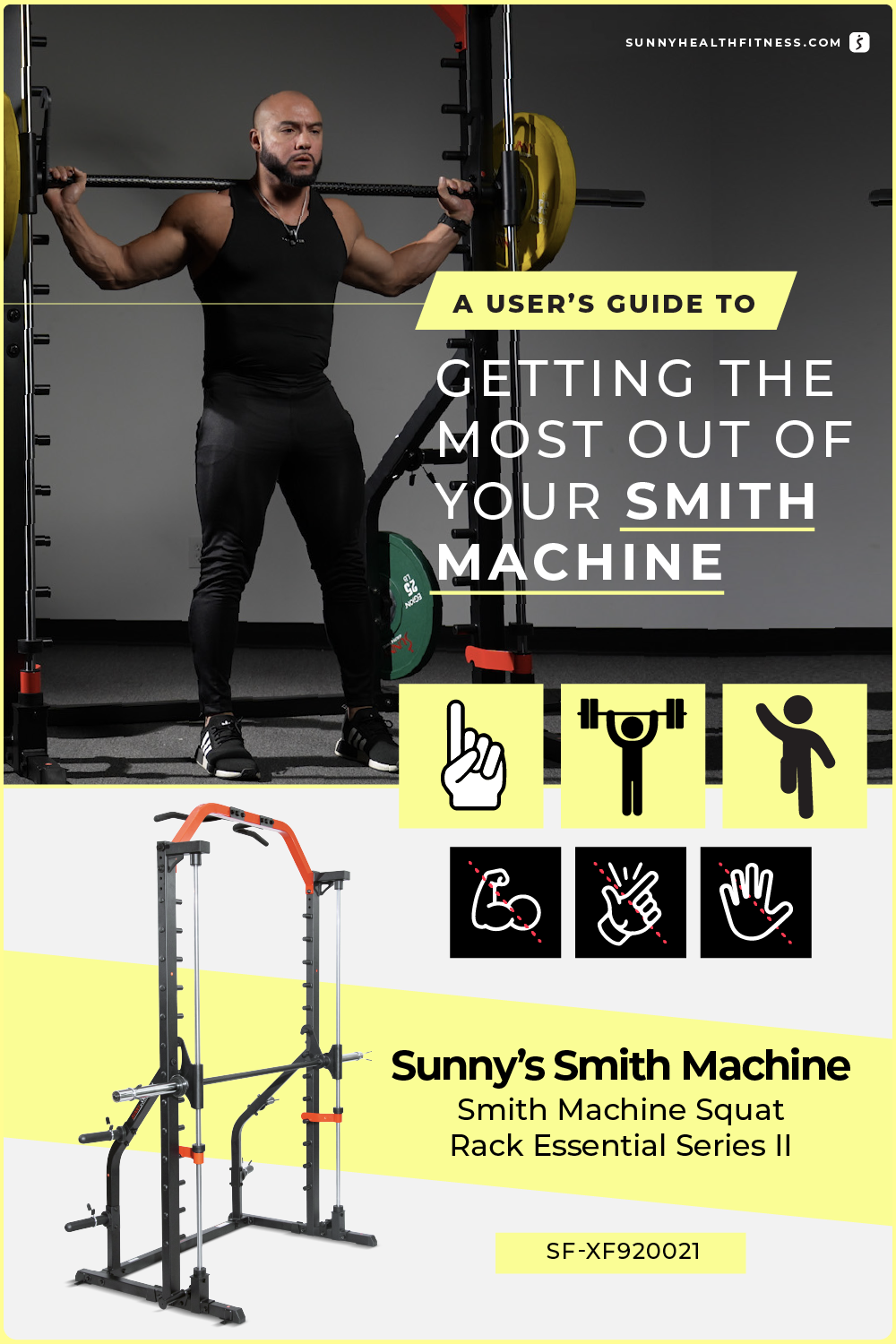












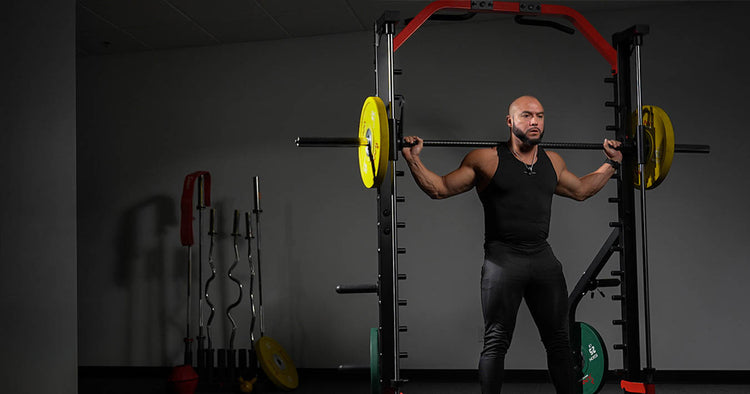



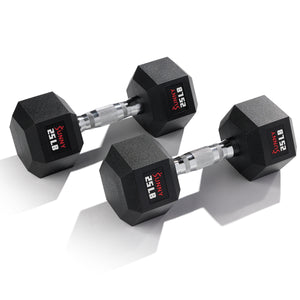
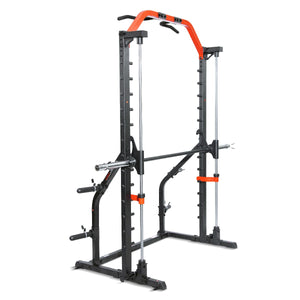








Add Your Name & Email
Please enter your name and email to continue.We won’t display your email publicly.